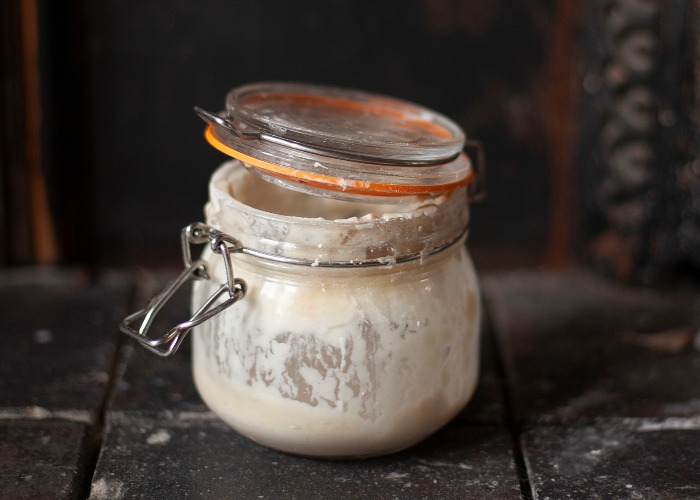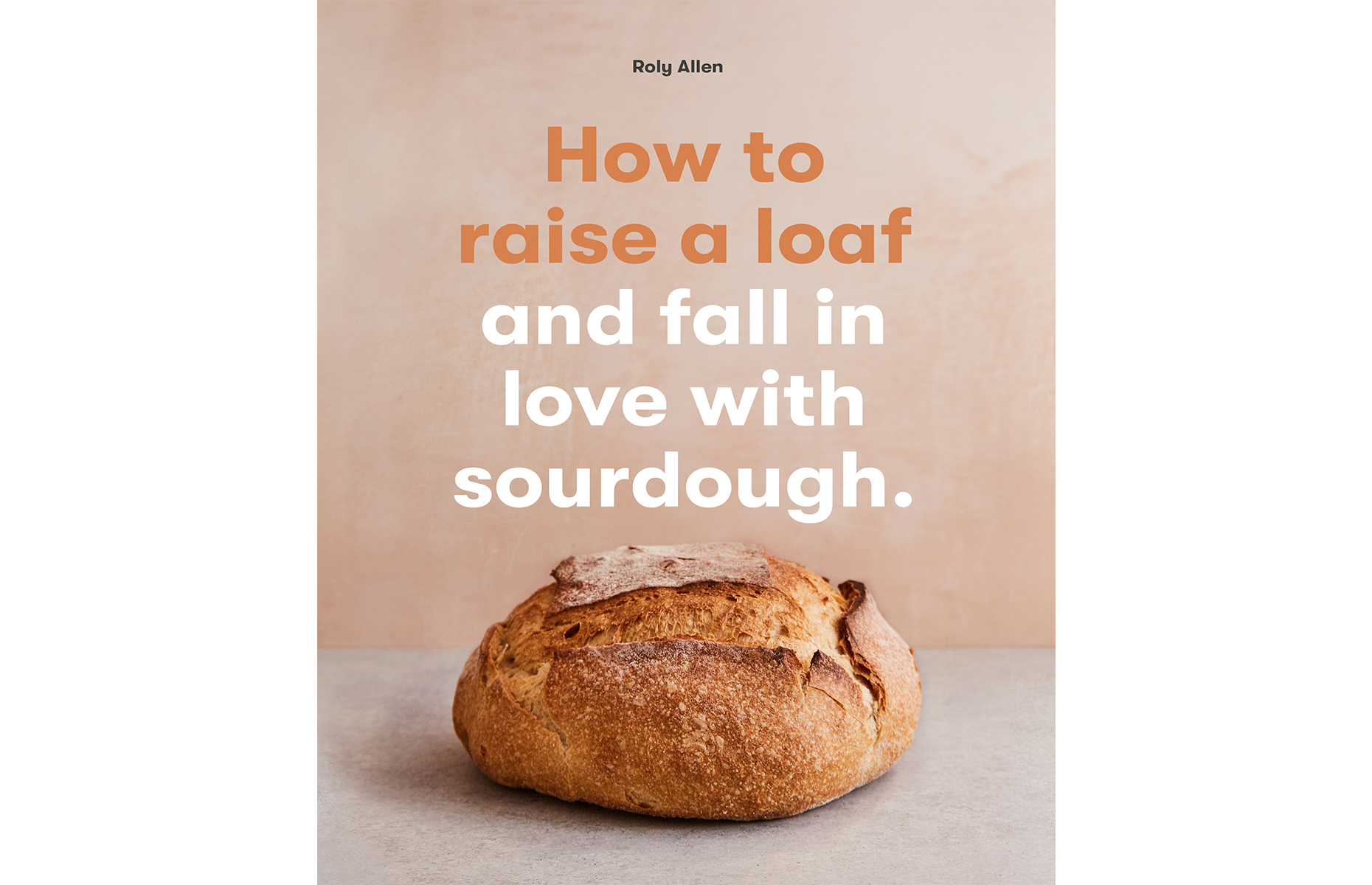Basic sourdough starter recipe

A starter forms the basis of a sourdough loaf. Always use organic ingredients if you can: they will not have been exposed to the powerful pesticides that strip away the natural bacteria and yeasts which you need to enrich your starter.
This is just one way to make a sourdough starter. You could also add equal quantities (around 30g/1oz) of strong white bread flour or rye flour and water each day.
Ingredients
- 1 tbsp organic natural yogurt
- 400 ml water
- 300 g strong white bread flour
- 10 raisins
- 1 tbsp organic natural yogurt
- 14.1 fl oz water
- 10.6 oz strong white bread flour
- 10 raisins
- 1 tbsp organic natural yogurt
- 1.7 cups water
- 10.6 oz strong white bread flour
- 10 raisins
Details
- Cuisine: British
- Recipe Type: Bread
- Difficulty: Easy
- Preparation Time: 5 mins
- Cooking Time: 0 mins
- Serves: 1
Step-by-step
Day one
- Take a clean jam jar or preserving jar, at least 500ml/17fl oz in capacity.
- Mix the yogurt and 50ml/1.6fl oz of water in the jar, then add 25g/0.8oz of the flour and mix that in. Finally, add the raisins.
- Put the lid loosely on top of the jar (not sealing it) and leave it in a warm place. Tip: Set a daily alarm on your mobile phone so you remember to check in with the starter at about the same time each day.
Day two
- Open the jar and give it a good sniff to see if you can detect any scent of alcohol vapour being given off by the yeast. No worries if not, but if you do have these smells, you’re already on your way.
- Whether or not you can smell anything, add 50ml/1.6fl oz of water and another 25g/0.8oz of flour, stir, cover loosely, and put the jar back into its warm place.
Day three
- All being well, you will today see tiny, pinhole-sized bubbles on the surface of the mixture and smell something – sour, sweet, volatile – that will confirm that your starter is springing into life. Don’t worry if you don’t, though, especially if the room is on the cool side.
- Add 100ml/3.3fl oz of water and 50g/1.7oz of flour and stir well. Cover loosely and return the jar to its warm place.
Day four
- By now you should see and smell clear evidence of fermentation in the mix. It may be full of bubbles – a good sign – and you may get a sour odour (not unpleasant – similar to the smell of natural yogurt) when you sniff. You may even get a slight whiff of alcohol.
- In any case, the raisins will have done their job of introducing the wild yeasts to the mixture, so it’s time to get them out. Add 100ml/3.3fl oz of water, stir, and strain the runny mixture through a sieve and into a jug.
- Tip the mix back into its jar, add 100g/3.5oz of flour, stir, cover loosely and return to the warm place.
Day five
- By this point it should be clear that your mixture is completely alive, with plenty of foamy bubbles. It’s full of healthy, active yeasts and a rich mixture of lactobacteria, but it needs thickening up in order to become manageable. If you want to use it today, add about 50g/1.7oz of flour, mix thoroughly and leave it for a couple of hours before you bake.
- Otherwise, discard about three-quarters of the mixture, add 100ml/3.3fl oz of water and 100g/3.5oz of flour to what’s left, and stir well to make a thick paste. About eight hours later you should have about 300g/10.5oz of vigorous starter – more than enough for your first loaf. If you don’t want to bake today, don’t worry. Just park the starter in your fridge until you do.
Once your starter is ready, find the recipe for sourdough loaf here
This recipe is from How to Raise a Loaf and Fall in Love with Sourdough by Roly Allen. Photography by Ida Riveros. Published by Laurence King, £12.99.

You might also like:
Comments
Do you want to comment on this article? You need to be signed in for this feature